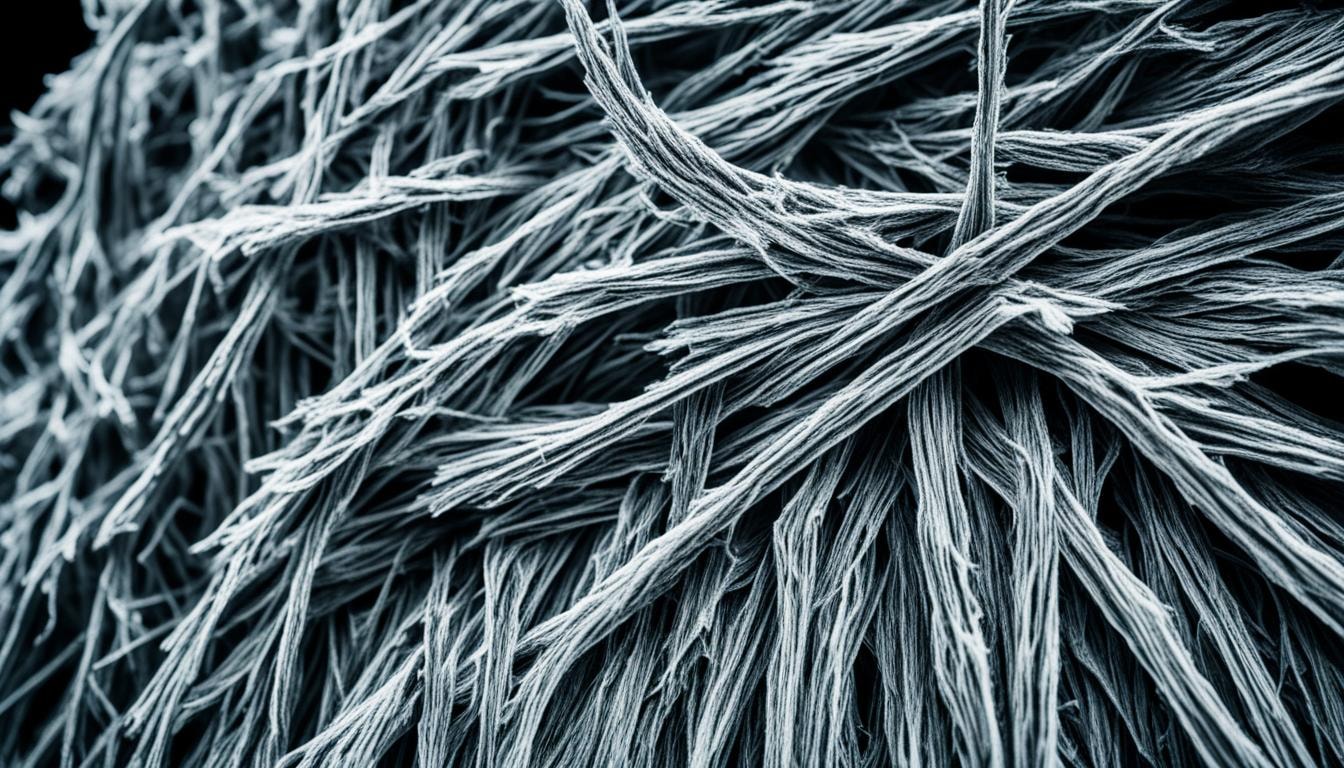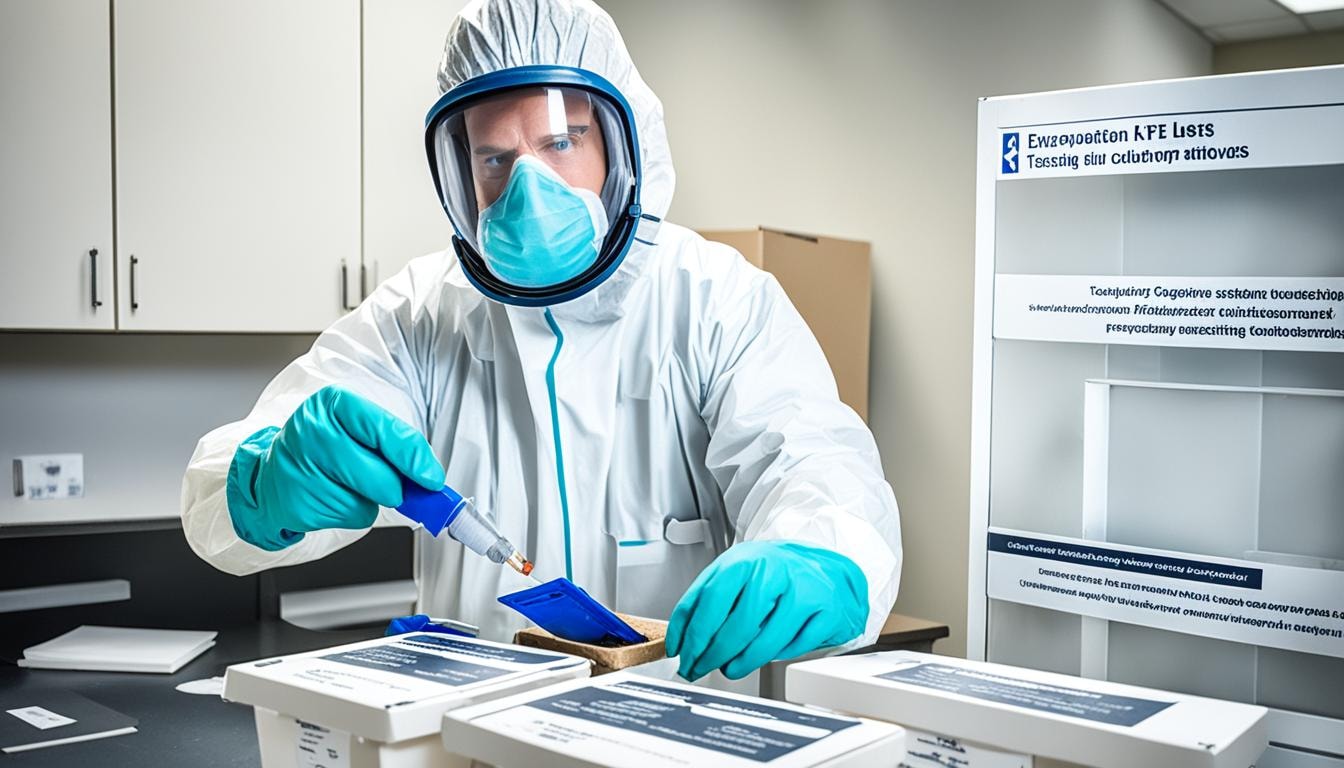Asbestos Testing Near You
Can’t find what you are looking for?
How It Works
-
Answer a few questions about your home project.
-
Within seconds, get matched with top-rated local pros.
-
Compare quotes and choose the best pro for the job.
Asbestos Testing In Your Area
A Comprehensive Guide to Asbestos Testing: What You Need to Know
Meta Description: Discover the essentials of Asbestos Testing in our comprehensive guide. Learn about safety measures, testing methods, and when to seek professional help for your peace of mind.
Have you ever thought about dangers in your home or work? Asbestos is one big concern for keeping us safe and healthy. This guide will teach you about asbestos testing. It will help you make smart choices to protect your health. But first, let’s talk about what asbestos is and why it matters.

Key Takeaways
- Asbestos-related diseases can take 10 to 40 years to develop, making early detection crucial.
- Buildings constructed or renovated before the 1980s are at a higher risk of containing asbestos.
- Asbestos can be found in a variety of building materials, including insulation, floor tiles, and roofing shingles.
- Exposure to asbestos can lead to serious health issues like Asbestosis and Mesothelioma.
- Professional asbestos testing is often recommended before moving into a new home or undertaking renovations.
Understanding Asbestos and Its Dangers
Asbestos is a natural mineral that was used a lot in building and making things because it doesn’t burn easily and keeps heat out. But, breathing in asbestos fibers can cause serious health problems. These include lung cancer, mesothelioma, and asbestosis. These problems can harm the lungs and other organs badly.
So, it’s very important to check for asbestos in buildings and materials.
What is Asbestos?
Asbestos is a group of fibers found in nature that were once valued for being strong and not burning easily. These fibers were often used in things like ceiling tiles, insulation, and car parts. But, the same things that made asbestos useful also make it very dangerous for our health.
Health Risks Associated with Asbestos Exposure
Being around asbestos fibers can cause serious diseases, including:
- Asbestosis – a long-term lung disease from asbestos fibers building up in the lungs.
- Mesothelioma – a rare and aggressive cancer that affects the lungs, belly, or heart lining.
- Lung Cancer – asbestos is a big risk factor for lung cancer, especially if you smoke too.
These diseases can take 15 to 30 years to show up after first being exposed. So, it’s very important to deal with asbestos dangers quickly. Old homes and some jobs, like mining, building, and fixing cars, increase the risk of getting exposed.

When is Asbestos Testing Required?
Asbestos testing is key to keeping everyone safe during building and renovation work. Owners and managers need to know when to test for asbestos. This is to follow the rules and keep workers, people living nearby, and the community safe.
Here are the main times when you need asbestos testing:
- Before tearing down or fixing things that might have asbestos
- If you see damage or wear on materials that could have asbestos
- Before doing any remodeling or refurbishment work that might touch asbestos-containing materials
Testing for asbestos finds out if it’s there and how bad it is. This lets you take the right steps to remove it safely. It keeps workers, people living in the building, and the area around it safe during demolition, renovation, or remodeling work.

The Asbestos NESHAP rule says you must test for asbestos before some building projects, no matter how old the building is. Owners who don’t test for asbestos and act on it can get big fines and legal trouble.
Types of Asbestos Testing
Asbestos air testing is key to keeping people and the environment safe. There are many types of asbestos air testing, each with its own goal. Knowing these types helps you pick the right test for your situation.
Background Asbestos Air Testing
Background asbestos air testing sets a baseline before starting any asbestos work. It checks the air for asbestos fibers before any work begins. This gives a base level to compare against later.
Leak Asbestos Air Testing
Leak asbestos air testing checks if asbestos fibers are staying in the work area. It makes sure the fibers don’t leak into the rest of the space.
Reassurance Asbestos Air Testing
Reassurance asbestos air testing checks if an area is safe after touching asbestos materials. It makes sure the asbestos is under control, so people can safely go back in.
Clearance Asbestos Air Testing
Clearance asbestos air testing is needed after removing asbestos. It checks if the area is clean and safe for people to be in again.
The right asbestos air test depends on the situation. It’s important to follow the right steps and work with experts for accurate results.
Methods for Asbestos Testing
There are two main ways to test for asbestos: Phase Contrast Microscopy (PCM) and Transmission Electron Microscopy (TEM). Each has its own benefits and things to consider.
Phase Contrast Microscopy (PCM)
PCM is quick and less expensive for asbestos testing. It’s the NIOSH Method 7400 for “Asbestos and Other Fibers” in air. But, it can’t tell asbestos from other fibers, which might affect the accuracy.
Transmission Electron Microscopy (TEM)
TEM gives more precise results by identifying asbestos types, even in tiny fibers. The TEM Analytical Methods report results as structures per square millimeter, focusing on asbestos fibers. This is crucial in places like schools where accuracy matters a lot. TEM takes longer and costs more but gives very reliable results.
Choosing between PCM and TEM depends on how sure you need to be and how detailed you want the results to be. PCM is good for a quick check. TEM is better when you need to know exactly what kind of asbestos fibers you have.
Requirements for Asbestos Testing
Asbestos testing must follow strict rules to be reliable. The Asbestos Hazard Emergency Response Act (AHERA) and the Occupational Safety and Health Administration (OSHA) set these rules. They cover how to take samples and analyze them.
These rules are for all steps of asbestos testing, from taking samples to analyzing them in the lab. Only trained experts can do the sampling and testing. They use the right methods and tools. The process must be done as OSHA says to get accurate results.
- Asbestos sampling and analysis must be done by certified inspectors and labs.
- Sampling must follow AHERA and OSHA rules for good results.
- Labs use approved methods like Phase Contrast Microscopy (PCM) or Transmission Electron Microscopy (TEM) to find and count asbestos fibers.
- Building owners need detailed Asbestos Survey Reports for demolition and renovation to avoid disturbing asbestos.
- Asbestos rules change by place, so building owners and contractors must follow state and local laws.
Following these strict asbestos testing rules is key to protecting health and the environment. By sticking to these protocols, building owners and contractors can make sure asbestos testing is accurate and safe. This helps reduce the dangers of asbestos.
Who Can Perform Asbestos Testing?
Only licensed and accredited pros should do asbestos testing. This includes certified asbestos consultants, accredited inspectors, licensed contractors, or certified industrial hygienists. They have the right training to do the testing and understand the results.
In California, some contractors can take up to 12 samples in homes. But they can’t give health advice or check asbestos risks. This is based on the California Business & Professions Code.
The U.S. Environmental Protection Agency and Cal/OSHA give rules on asbestos. Owners must tell people about asbestos in buildings. Employers also have to inform their workers about asbestos dangers.
Not doing asbestos surveys in California can lead to fines. UL Solutions is a top asbestos testing service. They do inspections, oversee removal, and give final reports.
It’s key to hire licensed pros for asbestos work. Not doing so can lead to deadly diseases from asbestos.
- Certified asbestos consultants
- Accredited asbestos inspectors
- Licensed general contractors
- Certified industrial hygienists
Costs of Asbestos Testing
The cost of asbestos testing can change a lot. For homes, it’s about 0 on average. But, full inspections can be more than ,500. For projects like renovations or demolitions, it starts at ,200 because they’re riskier.
At the low end, a basic check for a home sale can be as cheap as 5. But, for big homes or those likely to have asbestos, it can go up to ,500 or more. If asbestos is found, you might need more tests, which adds to the cost.
The price of air testing depends on your property’s size. It often needs many samples, especially for certain materials. If you think asbestos is in your pipes, you might need water testing too. Checking deeper into walls or under floors can also make the price go up.
- Residential asbestos testing costs typically range from 5 to ,500
- Renovation and demolition projects can start at ,200 for inspections
- Air testing costs depend on the number of samples required and property size
- Water testing may be necessary for pipe materials indicating asbestos presence
- Deeper-level inspections within walls or sub-floors can increase costs
The location, condition of your property, and the testing methods and equipment used can change the cost. Talking to a certified asbestos testing expert, like Essel Environmental Engineering and Consulting, can give you a better idea of what you’ll pay.
Preparing for Asbestos Testing
Getting ready for asbestos testing is key for getting right results. It means having a pro collect samples, pack them right, and send them fast to a lab. If you don’t do this right, the test results won’t be trustworthy.
Collecting Asbestos Samples
Getting asbestos samples right is very important. Only trained experts who know about asbestos should do this. They make sure the samples are true to the material and safe to take.
Packaging and Shipping Asbestos Samples
After getting the samples, they need to be packed and sent out. This means putting them in sealed bags and adding labels. Then, they send them quickly to a lab that’s approved to test them.
By doing these steps, you make sure your asbestos test is done right. This helps you know what to do with materials that have asbestos. It’s all about being careful and precise.
Interpreting Asbestos Testing Results
It’s very important to understand asbestos test results for everyone’s safety. We look at the asbestos fiber count, the type of asbestos, and if it’s safe to be around. This helps us know what steps to take next.
The test report shows how many asbestos fibers are in a certain area. We compare this to safety limits. If the levels are high, we might need to remove the asbestos or keep an eye on it.
Knowing the type of asbestos matters too. There are different kinds like Chrysotile, Amosite, and Crocidolite. Each one is different and can affect health in its own way.
- Chrysotile is the most common and seen as less dangerous than Amosite and Crocidolite.
- Amosite and Crocidolite are more likely to cause serious health problems like mesothelioma and lung cancer.
Talking to the experts who did the test helps us make the right decisions. They make sure we handle asbestos safely and keep everyone safe.
Discover Your Perfect Pros with FindPros
Are you ready to tackle your home project with confidence? At FindPros, we simplify the process of finding the right professionals for your needs. By filling out our quick survey, you’ll gain access to top-rated local pros who compete for your job, ensuring you get the best pricing available. Not only can you compare quotes, but you’ll also find pros that align with your values and preferences. In just seconds, you can connect with skilled professionals tailored to your project, making your decision easier and more informed. Don’t wait—let us help you find the perfect match for your home project today.
Conclusion
Testing for asbestos is key to finding and dealing with asbestos risks in homes and buildings. It helps people and businesses know how to protect themselves from asbestos dangers. By learning about asbestos testing, they can make smart choices to keep everyone safe.
The EPA has looked into chrysotile asbestos and found it poses health risks. This led to rules to protect people from asbestos-linked illnesses like lung cancer and mesothelioma. The EPA is still working on Part 2 of the Risk Evaluation for Asbestos. This shows how important asbestos testing and surveys are.
Before doing renovations, demolitions, or removing asbestos, surveys are often needed. Asbestos was in many building materials. Testing and surveys help find asbestos, guide removal, and prevent extra costs and delays. Asbestos testing is key to keeping people healthy, meeting legal needs, and following rules.
Frequently Asked Questions (Asbestos Testing)
MOST POPULAR CITIES
Browse by State- Alameda
- Costa Mesa
- Laguna Beach
- Orange
- Alhambra
- Culver City
- Lancaster
- Oroville
- Anaheim
- Daly City
- Livermore
- Oxnard
- Antioch
- Davis
- Lodi
- Pacific Grove
- Arcadia
- Downey
- Lompoc
- Palm Springs
- Bakersfield
- El Centro
- Long Beach
- Palmdale
- Barstow
- El Cerrito
- Los Angeles
- Palo Alto
- Belmont
- El Monte
- Malibu
- Pasadena
- Berkeley
- Escondido
- Martinez
- Petaluma
- Beverly Hills
- Eureka
- Marysville
- Pomona
- Brea
- Fairfield
- Menlo Park
- Port Hueneme
- Buena Park
- Fontana
- Merced
- Rancho Cucamonga
- Burbank
- Fremont
- Modesto
- Red Bluff
- Calexico
- Fresno
- Monterey
- Redding
- Calistoga
- Fullerton
- Mountain View
- Redlands
- Carlsbad
- Garden Grove
- Napa
- Redondo Beach
- Carmel
- Glendale
- Needles
- Redwood City
- Chico
- Hayward
- Newport Beach
- Richmond
- Chula Vista
- Hollywood
- Norwalk
- Riverside
- Claremont
- Huntington Beach
- Novato
- Roseville
- Compton
- Indio
- Oakland
- Sacramento
- Concord
- Inglewood
- Oceanside
- Salinas
- Corona
- Irvine
- Ojai
- San Bernardino
- Coronado
- La Habra
- Ontario
- San Clemente